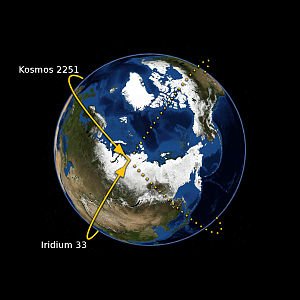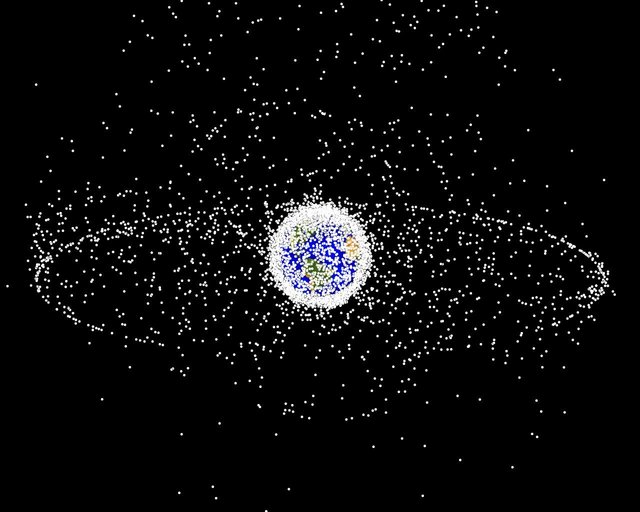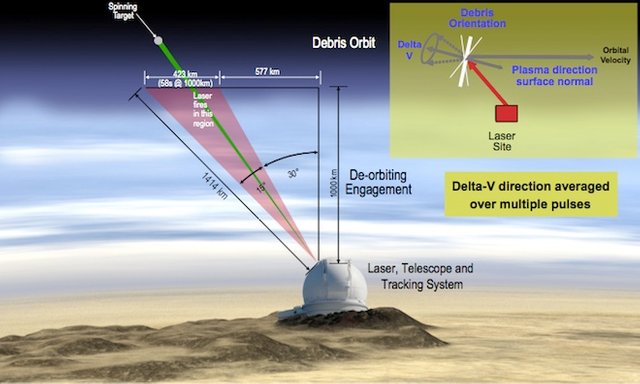Kessler Syndrome: How Debris in Earth's Orbit Might Prevent Space Exploration
Every second of every hour of every day, there are millions of individual items hurtling through Earth's orbit at enormous speeds. Satellites, rocket stages, loose nuts and bolts, and even flecks of broken off paint. These items are flying at speeds of around 5 miles per second. Imagine the amount of damage they would do if they were to hit something else? The Hubble Space Telescope? The International Space Station? Every satellite, rocket, or other item launched into outer space creates one more hazard.
Background
Back in the early days of space travel, the common way of thinking about space was known as the big sky theory. Basically, space was conceived as to be so enormous that there was no way that man-made objects could possibly ever run into each other. Well, that conception was completely wrong and began to change with a paper published by a man named Donald J. Kessler. In his 1978 paper "Collision Frequency of Artificial Satellites: The Creation of a Debris Belt", he essentially claims that the growing amount of debris flying in Low Earth Orbit (where almost all rockets and satellites end up) would eventually and inevitably lead to a massive and catastrophic domino effect of collisions that would riddle Earths orbit with an almost impassable barrier of tiny items hurtling through space at highly dangerous speeds. This is now known as the Kessler Syndrome. (Source)

The First Collision
And he was right too. In his original paper, he predicted that somewhere between 30 and 40 years from 1978, the first signs of Kessler Syndrome would begin to appear. Well, in 2009 the first two large astronomical bodies smashed into each other at a combined speed of 10 miles per second. The collision of Iridium 33, a US built communications satellite and Kosmos-2251, a retired Russian military communications satellite, created at least 1,000 pieces of debris larger than 10 centimeters, and countless smaller ones. (Source)

The Implications
As more and more objects are launched into space, the danger posed by fields of incredibly fast space debris will grow. Current projections believe that, at current rates, the number of individual pieces of debris in low earth orbit will double every couple of years. The likelihood of the beginning of a domino effect will begin to grow as well. For each collision that creates more debris, the next collision becomes more likely, until collisions create an "exponential increase in the number of with time, creating a belt of debris around the earth." This is a huge problem because it will become more and more difficult to launch anything into space without the danger of being struck by a small object with the force of multiple kilos of TNT.(Source)

Ultimately, if things are allowed to get completely out of hand, space may become completely inaccessible to humans for decades until space debris finally all burns up in Earth's atmosphere or falls to the surface. Some of the items higher in orbit could take centuries. As Jack Bacon, a NASA scientist in charge of protecting the International Space Station put it,
"the Kessler syndrome is in effect. We’re in a runaway environment, and we won’t be able to use space in the future if we don’t start dealing with this now.” (Source)
What We Can Do About It
One of my favorite things about astronomy, astronomers, and space in general is that there are almost always a million previously unexplored possibilities. Just because there isn't already an answer to a question, doesn't mean there will not be one the future. Exemplifying this belief, the ideas proposed to prevent, or at least mitigate the effects of, Kessler Syndrome have been varied and intriguing. Some of my favorites (although not necessarily the most promising) include attaching sails to the debris, attaching sticky weights to debris, creating an enormous inflatable balloon that would redirect debris, and releasing thousands of nanosatellites into orbit that would toss weights over debris, all with the goal of pushing space junk back into Earth's atmosphere. (Source)
While these ideas are a lot of fun to consider, the one that is likely the most promising piggybacks off of much older ideas. A project led by engineer Claude Phipps is designing a high-powered laser that would target space junk with laser blasts that would help to slow the objects enough to make them crash back into Earth's atmosphere. Depending on the size and strength of the laser, almost any object could hypothetically be made to fall out of Earth orbit. Of course, governments might not take too kindly to a laser system that could blast objects (like military satellites) out of Earth's orbit. Any project of this kind would require strong international cooperation and supervision. However, Kessler Syndrome is an international issue. (Source)

Conclusion
Kessler Syndrome is a real and immediate threat to any and all space ventures, be they commercial, military, or scientific. It would be a catastrophe should Kessler Syndrome be allowed to fully unfold and leave Earth's low orbit an almost impenetrable band of debris. The effects would hinder further space exploration and travel for decades, if not centuries.
Luckily, NASA, the ESA, and the international astronomical community are beginning to recognize the dangers posed by space debris. Research money is being reallocated to programs dedicated to preventing Kessler Syndrome, and politicians are starting to take note as well. Hopefully, in the next few years we will begin to see the implementation of a solution (I like the inflatable balloon) and a crisis can be averted. Ultimately, all that matters is that we can continue to explore the stars.

Interesting post, definitively check out: http://stuffin.space/
(Stuff in Space is a realtime 3D map of objects in Earth orbit, visualized using WebGL.)
This is a well put together post!
If I may make a suggestion, I would put some kickass space techy awesomeness as the first photo - to catch someones eye as they peruse the posts. Save your personal photo for the end. But it is your blog, do as you wish. :D
Fair enough, I just changed it....lets see if that helps!
I think it hit the spot!
quick, somebody call Boyan Slat. he'll know what to do.
I saw this on Nasa, the unexplained files and it is fascinating.
Thanks a lot for sharing this post. I have vaguely heard about that topic before and it is good to be able to read more concrete stuff about it (also in the links you provide)!
Glad you enjoyed it! I appreciate your posts as well, a lot of really good and well articulated information.
Fascinating! I've never considered this before. But wow. Why not? Thank you for teaching me something new, @victor-lucas.
It's one of those things that just makes sense, but you never really think about it until its laid out for you. Thanks for reading!
There's a pretty fascinating anime that revolves around this - it's called Planetes - basically a story bout a group of space debris cleaners :)
Ah yeah I've actually heard about that one! Never gotten around to watching it though, I'll check it out.